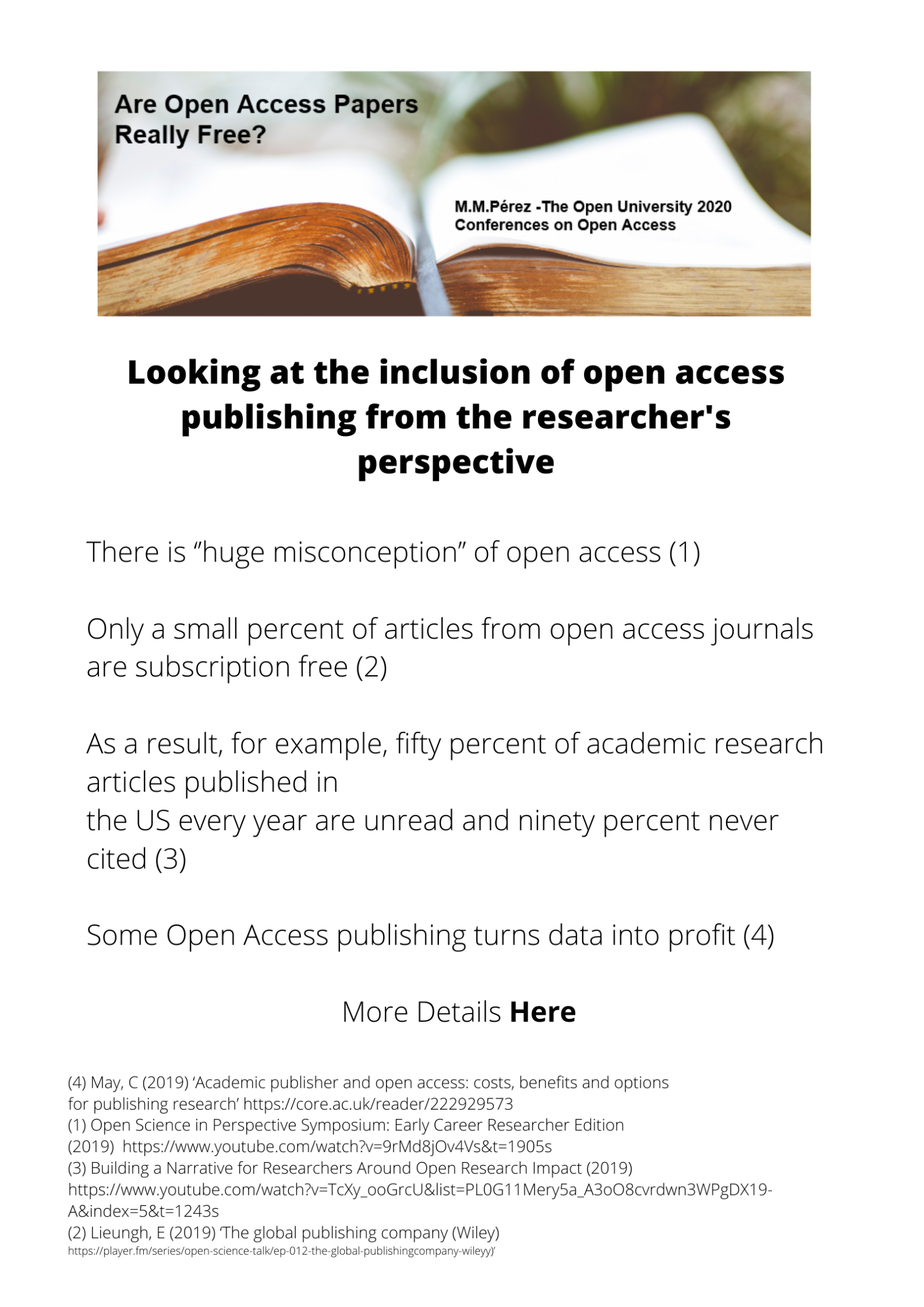The conference on open access that I will be presenting will be mainly looking at how inclusive open access publishing models are. Open access journals will be measured by how freely accessible they are to researchers.
To explain the difference between open access accessible and inaccessible journals, I will have to explain the various open access publishing models under which they are currently being published. From the researcher’s perspective I will explain which of these OA models are more accessible to us. My rational is based on my own experience as an early career researcher and on the barriers that I have encountered when trying to access research papers from open access journals. It is also based on the barriers and exclusion faced by the research published by most of these journals.
Furthermore, I will look at the consequences of having publishers, researchers and scholars using the term ‘open access journals’ when they are referring to journals published under different OA models whether these models are accessible or not.
Finally, I will go over the three main pillars that explain why, according to research, inaccessible OA publication models and research papers cannot overcome the benefits of those published under accessible open access models. These pillars are: dissemination, peer review and altmetrics. I will go over why and how these elements collaborate to the overall impact of research.
The material that I will be using in the conference will come, for example, from the work of May (2019). This article provides us with a compelling insight into the development of open access publishing and into the current existing models. The author is not exploring peer review in this work, but he is looking into why academics are not using accessible open access routes more often. To answer this question, he introduces us to the relevance of research dissemination, which is one of the subthemes of my project.
I will be presenting material on how altmetrics show that citation rates fail to reflect dissemination and research impact even though it is still one of the most popular methods that attempts to do so.
I will, then, be presenting material to show the relevance and significance of peer review and how it collaborates to improve the citation rates of authors and research.
The open access conference will provide an insight into how inclusive open access journal are to researchers and the barriers that we encounter while navigating the open access publishing ecosystem.
The various open access publishing models introduced in May’s article (2019) will be presented followed by an account on the significance of free and accessible open access journals. At the end, I will look into the benefits of fully open access journals based on peer review, dissemination and altmetrics.
Drop me a message if you would like a copy of the paper and references.
Image: CC Non-Commercial

Hi Miriam
Here are the questions and comments from your conference presentation – please respond in whatever way you wish!
Best wishes
Simon
– the other bias often happens that publishers dont want to publish negative findings as they headlines are not as catching!
– embargo period – never heard …interesting
– The obstetric findings about maternal and child deaths – which has had some massive headlines in the UK this year were embargoed in December due to the general election and would look bad for the conservative government
– Sometimes open access is the only way to reach an audience – e.g. education research couldn’t be accessed by teachers, creating a gap between research and practice
– [access] Can be connected with the subject of researching, for example, secret for the military service or?
– brillian summary of this very complex issue!
– Very beatyful presentation! Was pleasure!
– Miriam, really nice presentation! And you talked very clear!
LikeLike
Thank you for this, Simon. I will.
LikeLike